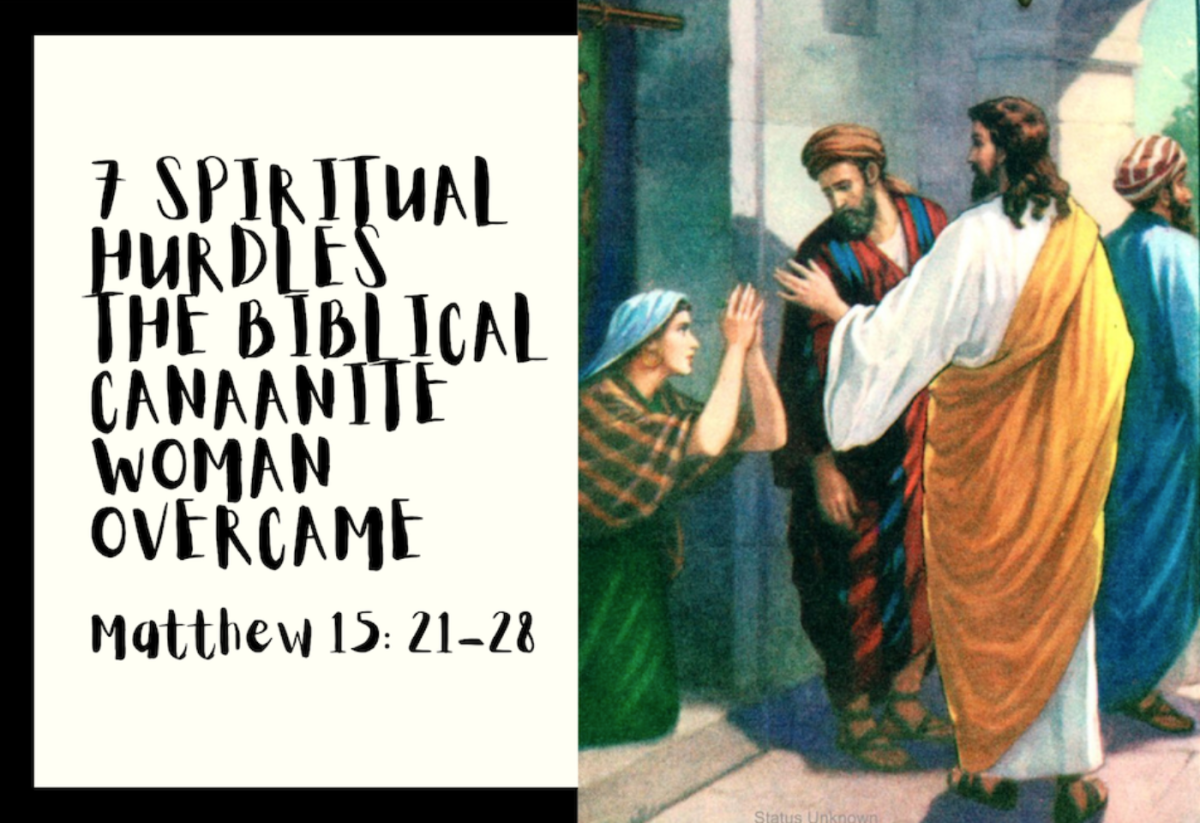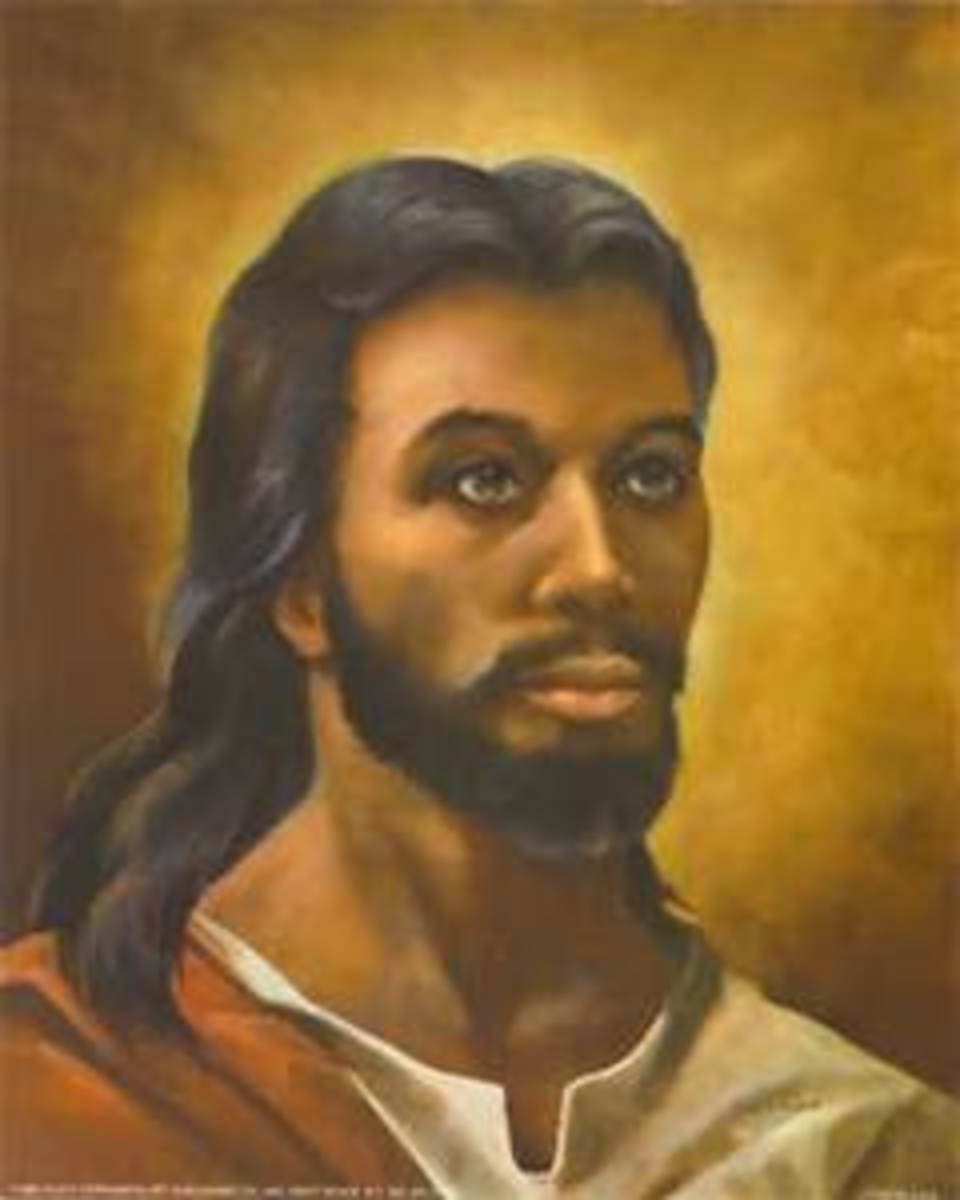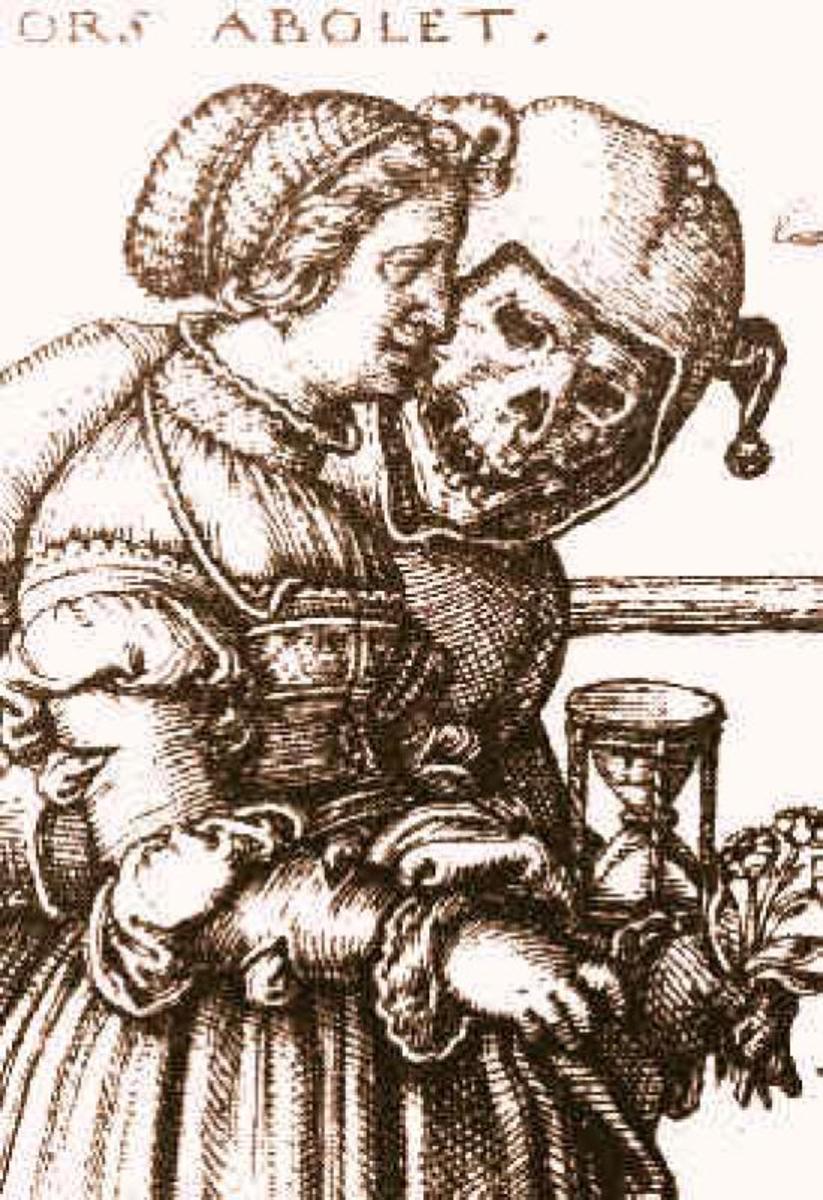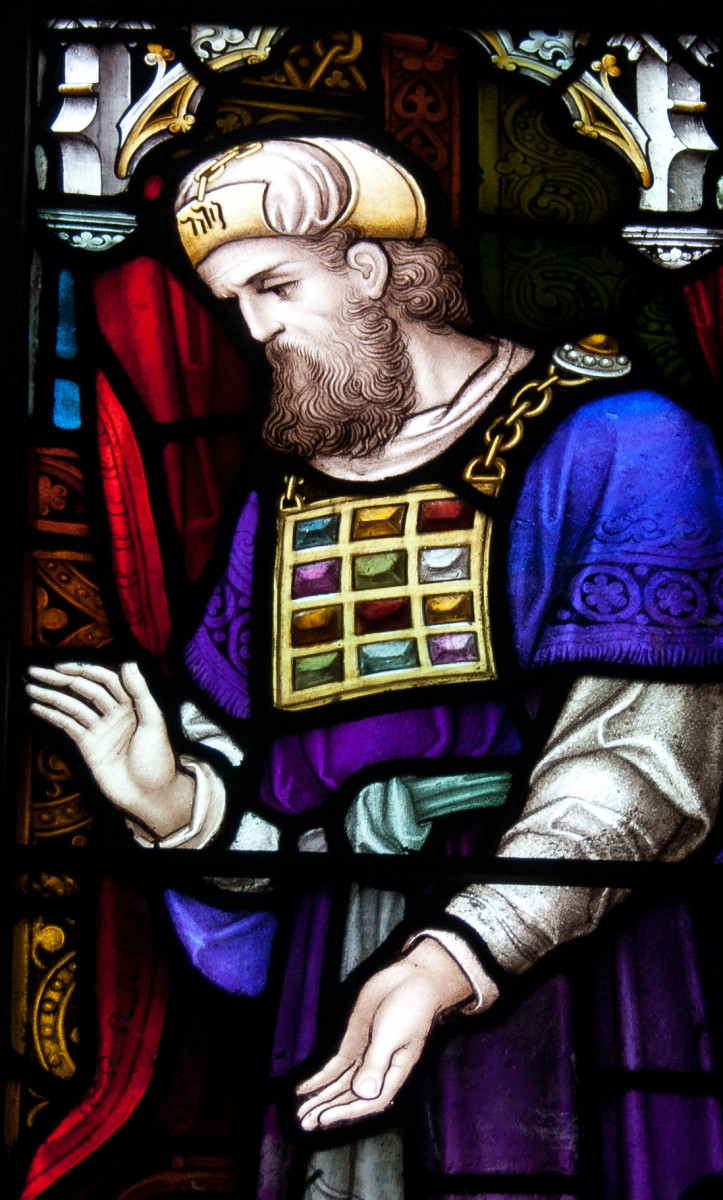Bible: What Does Matthew 8 Teach Us About Jesus Christ, the Miraculous Healer?
The Submissive Leper
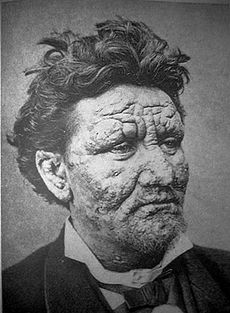
Faithful Roman Centurion
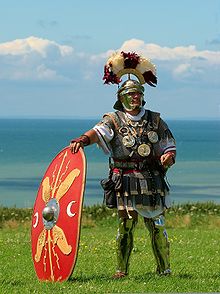
Medical Ministry
After He descends from the Mount, the Lord resumes His “medical” ministry among the multitudes (v. 1) by cleansing a leper (vv. 2-4), healing a centurion’s servant (vv. 5-13) and Peter’s mother-in-law (vv. 14-15), casting out demons from numerous individuals (vv. 16-17, 28-34), curing a paralytic (9: 1-8), raising a girl from death and a woman from disgrace (vv. 18-26), giving sight to two blind men (vv. 27-31), enabling a mute to hear and speak (vv. 32-34), and showing compassion on many others (v. 35).
In chapter ten He commissions His twelve disciples, sending them out with healing gifts to continue this ministry (vv. 1-4).
The leper whom Jesus meets exhibits several admirable attributes:
(1) humility in worship;
(2) proper reverence for the Lord, addressing Him correctly;
(3) submission regarding God’s sovereign will; and
(4) wisdom regarding Christ’s ability to heal (v. 2).
Jesus responds positively toward his submissive attitude (which showed that the leper understood God’s prerogative to heal or not to heal), graciously curing him with a mere touch (v. 3).
Instead of allowing him to broadcast this miracle, however, Jesus directs the now cleansed man to follow the Law’s prescription that demands that he offer the appropriate sacrifice in order to show the priests that a genuine healing had taken place (v. 4; cf. Lev. 14:4-32).
The centurion whose servant was paralyzed and tormented shows traits similar to those of the leper, and thus meets with Christ’s acceptance as well (vv. 5-7).
Addressing Him also as “Lord” (which title does not necessarily mean that he recognized His deity, but certainly does manifest respect for Jesus), this Roman soldier not only humbly acknowledges Christ’s power to heal from afar by speaking but a word, but also states His authority over him (vv. 8-9).
Astonished by this Gentile’s faith, Jesus informs the Jewish crowd that many non-Jews will fellowship with the patriarchs (believing Israel) in the Messianic kingdom (millennium); however, many Israelites (“the sons of the kingdom”) will not remain in that kingdom, but angels (implied) will throw them out into “outer darkness” (vv. 10-12).
The Parable of the Wheat and the Tares
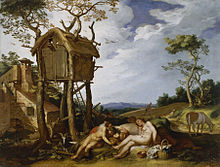
The Darkness Outside
Do you think this interpretation of "the darkness outside" is accurate?
[Some teachers offer controversial interpretations of certain parables.
Some of these stories refer to "sons of the kingdom"—Jewish believers—who will "enter" the kingdom, but not be "heirs" of the kingdom; that is, they will not reign with Christ because of their unfaithfulness during their mortal days.
Instead, angels will cast them into "the darkness outside."
Parables #1, #2
(The wheat and the tares, Matt. 13:38; the wedding feast, Matt. 8:12)
". . . but the sons of the kingdom shall be cast out into the outer darkness; in that place there shall be weeping and gnashing of teeth."
In Jesus’ explanation of this first parable to His disciples, He refers to the "sons of the kingdom" as the "good seed" which, of course, become the wheat (believers) [v. 38.]
Earlier in this gospel, however, the Lord says of certain "sons of the kingdom" that they will be cast into "the darkness outside" (Matt. 8: 12).
Now unless the term's meaning has changed, true believers spend time "in the doghouse."
The "darkness outside" (traditionally translated "the outer darkness") in the context of chapter eight does not have an eternal judgment connotation.
Rather, it refers to a place outside the lighted palace where “less than faithful” believers will reside.
Their disobedience excludes them from and does not allow them to fellowship with faithful Jews and Gentiles who are enjoying the wedding feast inside.
However, an objector might say, "Well, then, how about the 'weeping and gnashing of teeth’?
Does that not refer to the place of torment called Hell?"
No, not necessarily.
Again, the context determines the meaning of terms and phrases.
In some verses the term does refer to the suffering of the unsaved in the furnace of fire (Hell) [cf. Mt. 13:42, 50.]
In the ’’Parable of the Wheat and Tares” in Matthew 13:38, Jesus calls the good seeds the “sons of the kingdom.”
Thus the phrase in Matthew 8:12 cannot refer to Hell, especially since the Lord makes no mention of a furnace of fire.
In other words, both believers and non-believers can experience the same profound remorse (which weeping and gnashing of teeth suggest), but in different places.]
Jesus the Healer

Turning back to the centurion, Jesus tells him that his request will be answered according to [the purity of] his faith.
His servant experiences an immediate restoration (v. 13).
Having entered Peter’s house, the Lord sees His disciple’s mother-in-law “lying sick with a fever” (v. 14).
[Peter’s marriage clearly contradicts the Roman Catholic dogma that forbids priests to wed (cf. I Cor. 9:5).
In fact, according to Peter, all believers are priests—ordinary people who “offer spiritual sacrifices” and “proclaim the praises of him who called you” (1 Pet. 2:5, 9), not some special caste of professional clergymen.
Peter, an elder, qualified for that office by being “the husband of one wife” (cf. 1 Pet. 5:1; 1 Tim. 3:2).
The terms bishop, elder, and pastor seem to be interchangeable; all refer to the same person.
“Bishop (overseer)” pertains to the man’s church administration responsibility; “elder” to his spiritual maturity; and “pastor” to his shepherding/ feeding role.]
Jesus healed her out of compassion; His motive in doing so was not, however, that she would subsequently wait on Him (v. 15).
NKJV editors suggest that Matthew included “When evening had come” to underscore that the Sabbath evening had arrived, and that the people waited until dusk before bringing Him their demon-possessed and sick (v 16).
By healing them, Jesus fulfilled Isaiah 53:4—a verse prophesying Messiah’s assuming of Israel’s infirmities and sicknesses upon Himself (v. 17).
[Did these maladies manifest themselves in the physical world (that is, before and at the Cross), or was this transaction wholly spiritual?]
Chronology and Inerrancy
view quiz statisticsChronological accuracy does not appear to be very important to Matthew’s purpose.
For example, Jesus’ command to go to the other side of the Lake (v. 18) and the subsequent calming of its waves (vv. 23-27) occur in different sequential order in the other Synoptic gospels (see Mk. 4:35; Lk. 8:22).
For an unknown reason—perhaps Jesus’ adeptness at “turning a phrase” struck him hard—Matthew inserts two short conversations here to show the cost of discipleship:
(1) The divine Messiah, the Son of Man, had no permanent residence. Are His followers willing to be homeless with Him (vv. 19-20)?
(2) Following Christ means giving up your claim to an inheritance. Are His disciples willing to be destitute for Him (vv. 21-22)?
Instead of being exacting about chronology, Matthew seems more interested in assembling related content, i.e., episodes that highlight miracles.
Embedded in a context replete with Jesus’ power over physical infirmities (internal) appears the apostle’s account of the Lord’s control over the physical environment (external).
Struggling Disciples
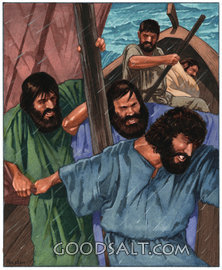
Jesus Calms the Sea
Exhausted from a long day of ministry, the Son, perfectly content in the Father’s arms, takes a nap amid a stormy excursion across the Sea.
He awakens to find His distraught disciples pleading for Him to save them (vv. 23-25).
With breathtaking simplicity, He powerfully rebukes His followers’ lack of faith as well as the winds’ and waves’ intemperate behavior; the latter quiet down while the former, bedazzled, remain in the dark about His true identity (vv. 26-27).
Perhaps sensing that the great multitude was intending to make Him king, He avoids the confusion and gives “a command to depart to the other side” of the lake (v. 18).
Matthew writes that Jesus enters into a boat and His disciples follow Him (v. 23).
[Is this just the apostle’s style, or did the disciples hesitate going to the other side because of who they knew dwelt there or what kind of people, viz., pig farmers, worked there?)]
After recording the disciples’ reaction to Jesus’ display of power over the Sea, Matthew writes, “When He had come to the other side . . . ” (v. 28; underscoring mine).
[Did the disciples stay in the boat? If so, why?
Did they fear the demonized men, or were they afraid of being ritually contaminated?]
The text says that two men met Him; the other Synoptics record that only one did (cf. Mk. 5:2; Lk. 8: 26-27).
[This seeming discrepancy finds an easy resolution.
Oftentimes the gospel writer focuses on the prominent individual—the one with whom Jesus is dealing or addressing—and does not even mention the presence of another.]
Jesus Casts Out Demons
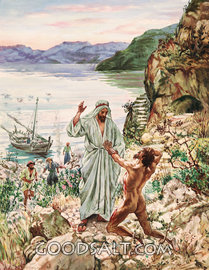
Verse 29 indicates that “they” cried out; the legion of demons, not the possessed men, verbally abuse Jesus here, since they all know who He is and what they believe He will do to them at their judgment.
In all likelihood, the demoniac spokesman would not have known these facts.
Jesus grants the legion permission to invade a herd of swine, which subsequently commits “sou eee cide” en masse (vv. 30-32).
[The Lord’s paramount concern remains the spiritual and physical health of the demoniac(s).
Though the pigs die as the result of His command, Jesus is not guilty of cruelty to animals or the destruction of private property.
The demons cause the animals to “freak out,” not Jesus.
After the pigs die, the demons flee their bodies and presumably become free to wander the world in search of other susceptible creatures.]
Onlookers—pig herders, no doubt—report Jesus’ doings in the city, and everyone (“the whole city”) assembles, comes out to Christ, and begs Him to leave their land (vv. 33-34).
[The text says, “And when they saw Him . . .” (v. 34).
Did His divine presence frighten them?
Having no authority over Him, they did not demand that He leave; instead, they begged Him to depart.
They wanted nothing to do with the One who destroyed their livelihood.
Notice that both the demons and the townspeople begged Jesus.]
© 2014 glynch1

